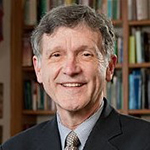By Bill Leonard
 “Secularization is the historical process whereby religious faith, religious involvement, religious identification, and religious institutions weaken, fade or become less significant in society. And while secularization is in no way inevitable or irreversible … when we look at the world today, the evidence for dramatic trajectories of secularization … is simply staggering.”
“Secularization is the historical process whereby religious faith, religious involvement, religious identification, and religious institutions weaken, fade or become less significant in society. And while secularization is in no way inevitable or irreversible … when we look at the world today, the evidence for dramatic trajectories of secularization … is simply staggering.”
So sociology professor Paul Zuckerman writes in Living the Secular Life: New Answers to Old Questions, a 2014 book in which he explores the dramatic rise in secularism in the United States and other western countries. Zuckerman, a self-identified secularist, takes seriously the statistical indications that a growing number of Americans (currently some 20 percent) are distancing themselves from religion and religious identity.
He talked about all this recently on “On Point,” the National Public Radio program based at WBUR, Boston. I participated in a portion of the conversation and read the book in preparation for our discussion. My on-air comments had less to do with debating Zuckerman, than in considering the impact of secularism on present and future religious communities. What lessons might American Christians, particularly Protestants, learn from this burgeoning cultural phenomenon? What do these trends suggest about the way Christians articulate the “Jesus Story” in word and deed? What are secularists saying and why is it important to hear them?
First, secularists promote values and seek meaning, apart from religion. Zuckerman, an able spokesperson for secular worldviews, insists that “while secular Americans may have nothing to do with religion, this does not mean that they wallow in despair or flail about in hapless oblivion. To the contrary, they live civil, reasonably rational, and admirably meaningful lives predicated upon sound ethical foundations.” He observes that amid a wide diversity of philosophies and ideologies, contemporary secularists “share certain key traits and values, such as self-reliance, freedom of thought, intellectual inquiry, cultivating autonomy in children, pursuing truth, basing morality on the empathetic reciprocity” evident in the Golden Rule. They accept their own mortality, and approach life with a “sober pragmatism” shaped by a genuine sense of transcendence. His concern is to provide a clear and sympathetic picture of secularism as it exists “on the ground” in the daily life of “ordinary people.” Why is religion not a factor in their search for meaning?
Second, Zuckerman’s statistics are daunting, and include:
• The number of persons claiming no religion (“nones”) reflects an increase from below 10 percent in the 1990s to some 20 percent to 30 percent of the American population in the 2010s.
• Since 2000 some 660,000 Americans a year have moved toward identifying themselves as having no discernible religious affiliation or identity.
• At least 30 percent to 50 percent of the non-affiliated claim to be atheist or agnostic in their approach to religious faith.
• Some 90 percent of identifiable secularists indicate no interest in engaging in religious pursuits.
These trends, already rampant in American society, are clearly impacting religious institutions in terms of church attendance, evangelism, ministry funding and engagement in church programs. Can churches stem the tide of such disengagement?
Third, Zuckerman suggests that the rise of secularism may be due to changes in the way a growing number of Americans view religious institutions. This includes:
• The rise of and backlash against the Religious Right and its links between conservative faith and conservative politics. Such right-wing religion, he says, has alienated “a lot of left-leaning or politically moderate Americans from Christianity.”
• Revulsion against clergy sexual abuse, particularly “pedophile priest scandal” within Roman Catholicism, and attempts of persons within the church hierarchy to cover it up.
• The dramatic increase of women in the national workforce has directly impacted their time and energy for involvement in institutional religious life.
• Increased cultural acceptance of homosexuality, often with strenuous religious opposition. Zuckerman contends that many who “continue to malign homosexuality as sinful or immoral, and … fight against gay rights, do so exclusively from a religious vantage point.”
• The rising influence of social media, offering information on multiple worldviews, and instant community with likeminded secularists, allowing persons “who may be privately harboring doubts about religion” access to others who share their views.
Zuckerman’s treatment of secularism offers a candid assessment of cultural realities that religious communities must take very seriously. Yet his version seems far more stable, middle class and socially engaged than may actually be the case. Likewise, he largely ignores a de facto secularism that is far more racist, sexist, homophobic and socially insensitive than he admits. Believe it or not, secularists are sinners too.
Nonetheless, what might rising secularism mean for Christian traditions in the United States? Might they:
• Recognize secularism as a long-term trend and consider specific responses to the issues it raises for religious life and thought.
• Be more intentional in developing faith/non-faith dialogue with secularists willing to engage in conversation.
• Revisit the “Jesus Story,” what it means and how it is both articulated and enacted in the church and in the world.
• Distinguish between unashamed gospel proclamation and arrogant pontification.
• Reclaim Christianity, not as a culture-privileged, corpse-cold orthodoxy, but as life-evoking sense of God’s good grace.
• Say one more time, with Jesus, “God’s New Day has come near.” And live like it really has.
